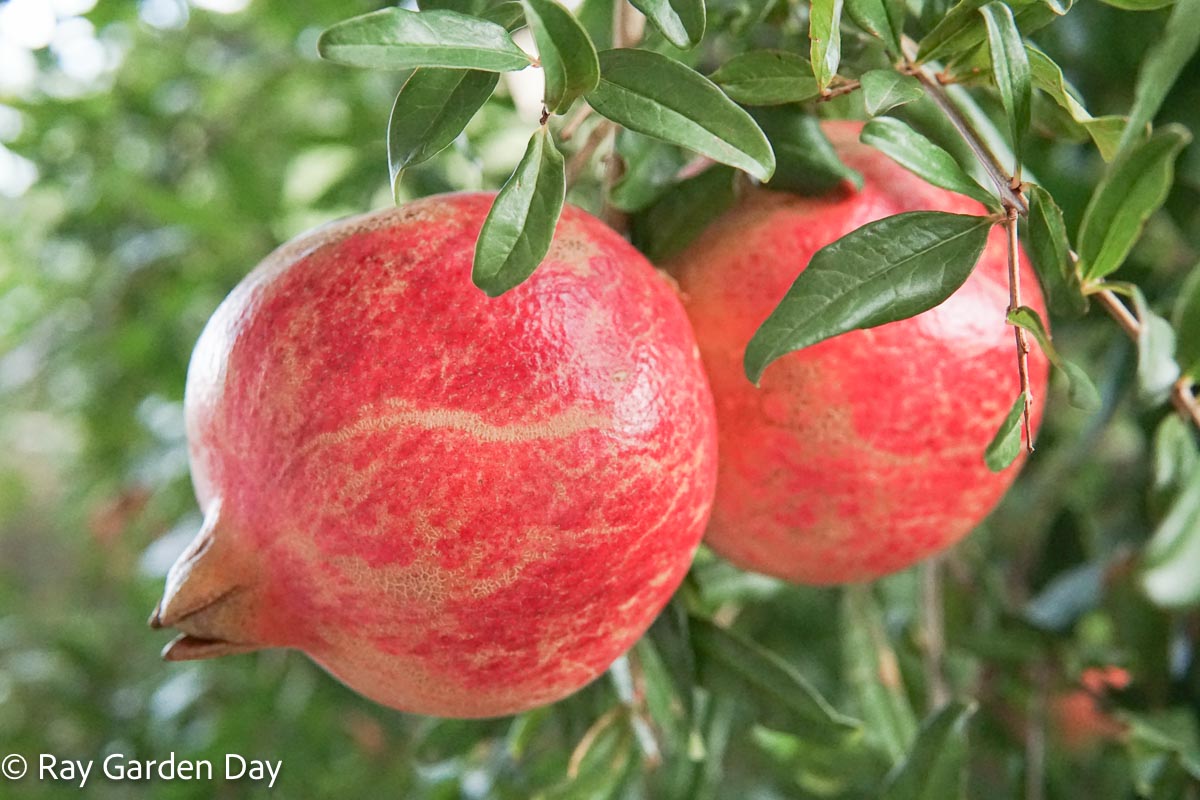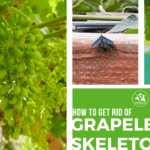In 2015, we planted our first Wonderful pomegranate tree. Setting about a journey to transform our garden into a haven where we can retreat from the world.
The pomegranate tree would help break up the monotonous xeriscape landscaping. As well as providing food for the family. Furthermore, pomegranate trees are drought tolerant and thrive with very little supplemental irrigation.
How do you plant pomegranates?
We specifically chose the Wonderful pomegranate tree for its various qualities. It likes full sun and we get plenty of here in Southern Arizona. We also happen to live in USDA Zone 9a which falls within the recommended Zone 7 – 11 growing requirement.
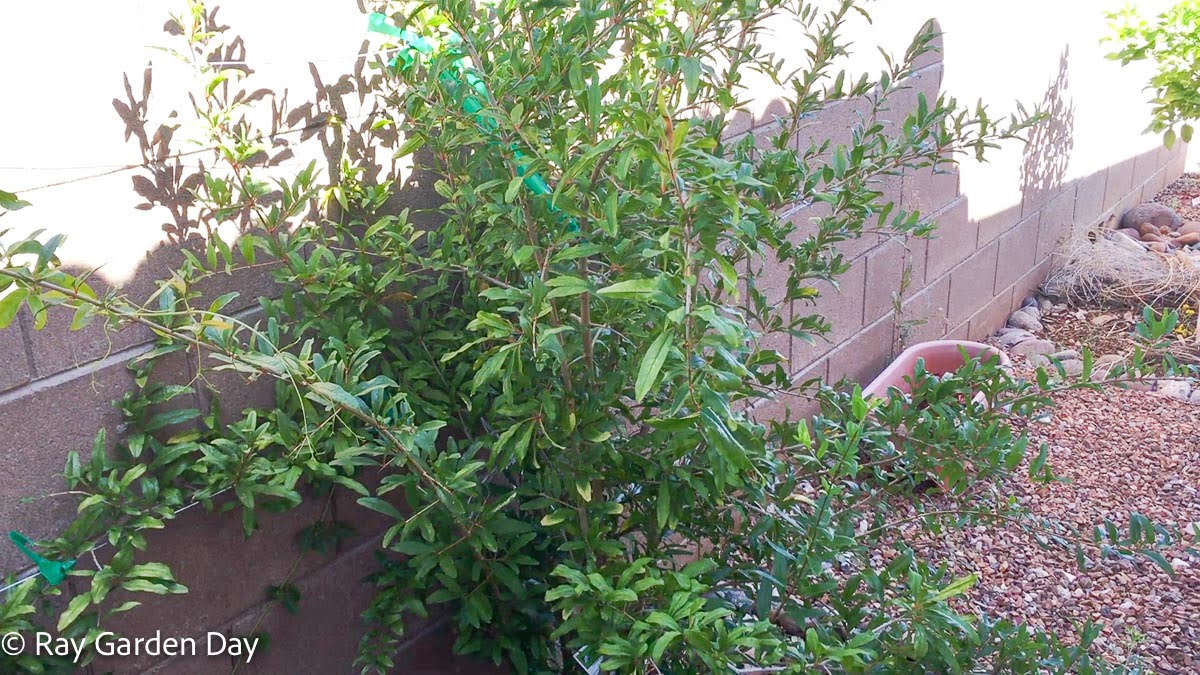
We planted our young Wonderful pomegranate tree in May. Though it’s somewhat late in the season to plant trees in a hot and arid climate likes ours. Spring and fall are the best time to plant.
Arizona soils have a lot of clay and are very alkaline as a result. Also underneath the surface soil was a hard-to-penetrate layer called caliche. It was really hard to dig a hole for our tree. But we managed to break through eventually giving us a hole a tad deeper than the nursery pot the plant came in. We dug twice as wide in order to backfill the hole with native soil and compost mix. This allows for better drainage because pomegranate trees need it.
In the winter months, night temperatures can dip into the teens in our region. Every other year we often get snow in our backyard. But our pomegranate trees do just fine. They are cold hardy and can survive temperatures as low as 10 degrees. To protect against frost, we planted next to a south-facing wall in order to maximize sunlight exposure from the low winter sun.
Wonderful pomegranate tree care
Caring for the Wonderful pomegranate tree and the Parfianka is relatively easy. We create a basin around the trunk to contain the water from a drip irrigation line. Then fill the basin with a 4-inch layer of mulch. Thus keeping the soil protected from direct sunlight and retaining moisture in the soil. As the tree gets bigger, so expand our basin to cover the root zone.
The pomegranate trees are on a weekly irrigation schedule. That is, we water them every 7 days. Also, twice a year, around March and November, the trees receive a balanced fertilizer with an added iron supplement. The latter nutrient is to prevent iron chlorosis, a deficiency often caused by our alkaline soil.

The best time to prune pomegranate trees is in late winter before buds break. Ideally, after risk frost or prolonged rainfall has passed to avoid diseases from infecting pruning wounds. Additionally, I prune during the growing season to remove weak, diseased, and suckers by cutting them at their base. Additional pruning includes thinning out cross branches. In other words, a branch that is grown out of place, crossing to rubbing branches, or branches growing towards the center of the tree.
Harvest
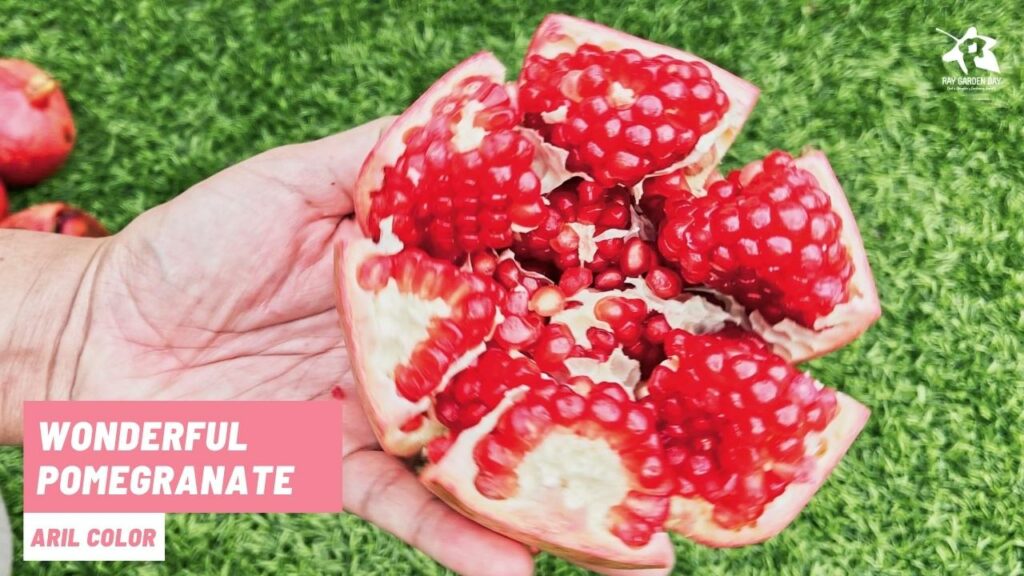
Starting around mid to late September is when we harvest Wonderful pomegranate. Each year we get between 40 to 60 fruits. Pomegranate fruits can remain on the tree for at least a couple of months. Even longer if you’re willing to protect the individual fruit with a netting bag.
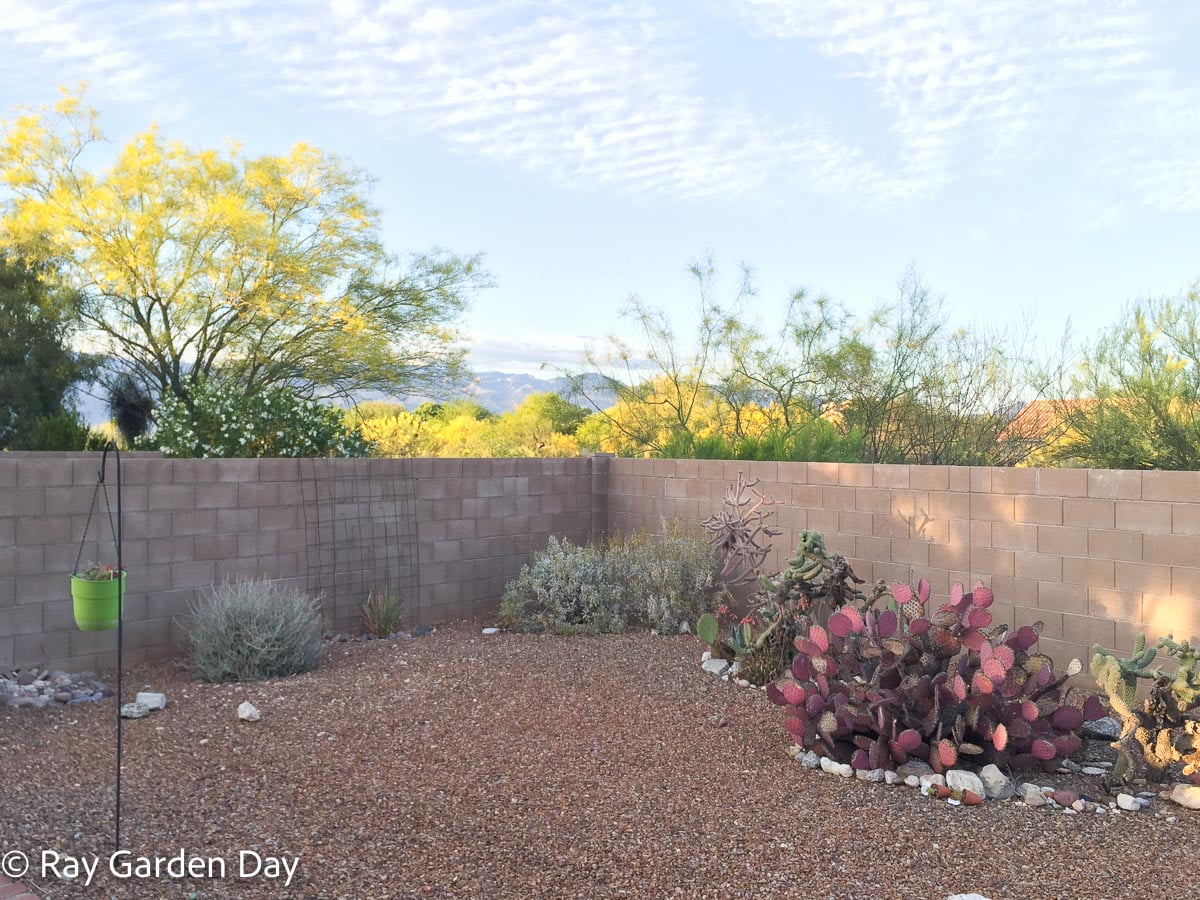
Our xeriscape backyard in 2015 
Backyard food forest in 2020
Above pictures: our garden back then and a piece of haven it is today much of owing to our first pomegranate tree.
Further resources on pomegranates are available at UCDAVIS Fruit & Nut Research.
